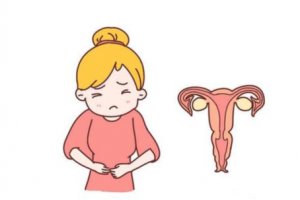Three Efficient Examination Methods For Endometriosis
Endometriosis occurs when growing endometrial tissue is present in the uterine cavity other than the lining mucosa. First identified in the mid-9th century, the disease most often occurs in the pelvic peritoneum, but also in the ovaries, coloprectum, and ureter. It is rare in the bladder, pericardium, and pleura.
Although the endometriosis is benign lesion, it has the ability of local implantation, infiltration and distant metastasis similar to malignant tumor. At present, most people think that the histogenesis of endometriosis is difficult to be explained by a single theory, and may be caused by multiple ways.

Pelvic endometriosis is mainly endometrium implantation and coelomic metaplasia, and the subofficial endometriosis disease beyond pelvic cavity are more likely to spread by the lymph. The disease can lead to many serious problems if not treated in time, such as pelvic pain, abdominal pain, irregular menstruation and even infertility. So timely diagnosis is extremely needed. There are three efficient options for you.
1. B-ultrasonic examination
The ultrasonography of the endometrioid cyst showed fine granular echo. If the cystic fluid is thick, the inner floating intima debris is easy to be similar to the echo characteristics of the hair contained in the fat of the teratosis, which is similar to the small fine light band in the fluid, showing the parallel dotted line distribution.
Sometimes the internal separation will be divided into a number of different size of the cystic cavity. The echo between each cyst cavity is inconsistent, often adherent with the uterus, and the boundary between the two gets unclear.
2. X-ray examination
In this regard, you can pelvicpneumography, hysterosalpingtubes lipiodography and hystero-salpingography. Most endometriosis patients have adhesion to internal reproductive organs and adhesion to intestinal curvature. The ectopic endometrium is most easily implanted in the rectovaginal pouch. The fallopian tubes and ovaries may form cohesive masses, so it is clearer on the film or on the inflatable radiography

3. Laparoscope
It is an effective method to diagnose endometriosis. Microscopic examination of the freshest grower shows small yellow blisters. Most of the scattered lesions fuse into brown plaques and are implanted deeply. The sacral ligaments are thickened, hardened and shortened.
Ovarian implant lesions are mainly in the ovarian free margin and its dorsal side. Initially granulomatous lesions develop into the ovarian cortex, forming a chocolate sac, having grayish-blue surface and mostly being bilateral. They move to the uterus rectum fossa, forming extensive adhesion with uterus, rectum and surrounding tissues.
If you are diagnosed with endometriosis, you need to find a suitable treatment in time. Surgical treatments are often used to solve endometriosis and its harmful tissues. While you can also try a more moderate but safer method, which is the herbal medicine Fuyan Pill.
This is a natural formula that can work well on the female pelvic cavity and leads to no side effects or drug resistance after long-time taking. It leads to no side effects or drug resistance, and helps to improve the female menstruation and self-healing capacity. So you can get better with its help.
You may also be interested in:
Western Medicine Treatment Guideline Of Endometriosis
previous pageHow Come Persistent Dysmenorrhea Occurs? Watch Out Endometriosis
next page
You may also be interested in
- Endometriosis and Debilitating Bowel & Bladder Pain: Diagnosis, Treatments, and Hope for Relief
- Struggling with Endometriosis Symptoms? Proven Back Pain and Painful Sex Relief Options
- Severe Endometriosis Treatment: Chronic Pelvic Pain Relief and Infertility Solutions
- New Endometriosis Pill Approved on NHS: What This Means for Patients and the Role of Traditional Chinese Medicine
- Can Endometriosis Be Endured Until Menopause?
Testimonials
- Adenomyosis with Ureaplasma Urealyticum Cured by Fuyan Pill
- Tubal blockage with hydrosalpinx can be cured by TCM shortly
- Fuyan Pill Helps A woman with Adenomyosis Get Pregnant
- A Woman with Hydrosalpinx Is Cured with Fuyan pill
- Pelvic Inflammatory Disease Testimonials
- Irregular Vaginal Bleeding and Endometrial Thickening Cured by Fuyan Pill
- Pruritus Vulvae and Frequent Urination: Mycoplasma Infection Cured after 2 Courses



